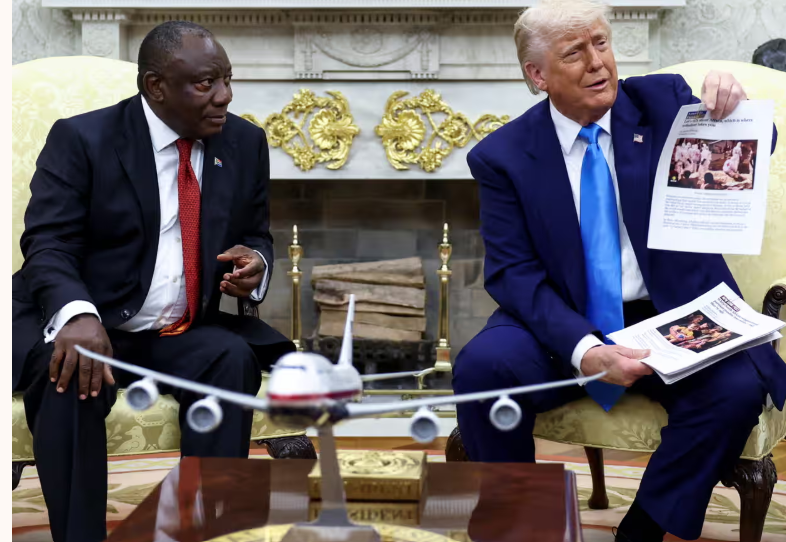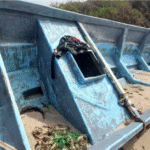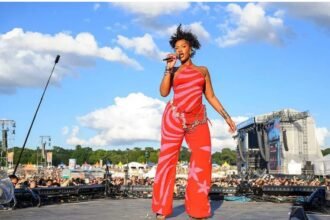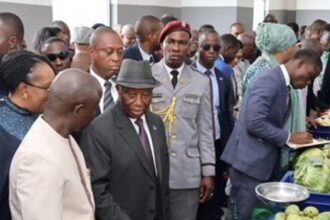By Patrice Katuma
Kinshasa, DR Congo – President Donald Trump presented South African President Cyril Ramaphosa with a falsely interpreted image during a contentious Oval Office meeting this week, claiming it showed evidence of mass killings of white South African farmers. However, the image, a screengrab from a Reuters video, was actually taken in the Democratic Republic of Congo (DRC) and depicts the aftermath of deadly fighting between the army and Rwanda-backed M23 rebels.
During the televised meeting, which was intended to mend strained relations between the two countries, Trump interrupted proceedings to brandish a print-out of the article accompanied by the misplaced image, declaring, “These are all white farmers that are being buried.”
The Reuters video, verified by the news agency’s fact-checking team, was taken on February 3rd in the Congolese city of Goma. It shows humanitarian workers struggling to lift body bags after the bloody conflict.
The blog post containing the misidentified image was published by American Thinker, a conservative online magazine, and focused on conflict and racial tensions in South Africa and Congo. While the post didn’t specifically identify the people in the image, it linked to a YouTube video report about Congo that credited Reuters.
American Thinker Managing Editor, Andrea Widburg, admitted to Reuters that Trump had “misidentified the image.” However, she stood by the post’s core argument, asserting that it “pointed out the increasing pressure placed on white South Africans,” and referred to Ramaphosa’s government as a “dysfunctional, race-obsessed Marxist government.”
The footage itself was captured by Reuters video journalist Djaffar Al Katanty following a deadly M23 assault on Goma. Al Katanty expressed shock at seeing his work misused by the U.S. President on the world stage.
“In view of all the world, President Trump used my image, used what I filmed in DRC to try to convince President Ramaphosa that in his country, white people are being killed by Black people,” Al Katanty said.
Ramaphosa’s visit to Washington aimed to ease recent tensions following repeated criticism from Trump regarding South Africa’s land laws, foreign policy, and allegations of mistreatment of its white minority, claims which the South African government vehemently denies.
Trump’s presentation, riddled with inaccuracies and fueled by the long-debunked conspiracy theory of a “white genocide” in South Africa, further complicated the already delicate diplomatic situation. He scrolled through printed articles, proclaiming “death, death, death, horrible death,” in what critics are calling a reckless and irresponsible performance that risks exacerbating racial tensions both at home and abroad.
The White House has yet to respond for comment on the misidentification of the image. The incident highlights the dangers of relying on unverified information, particularly within the context of sensitive international relations and racially charged narratives.









